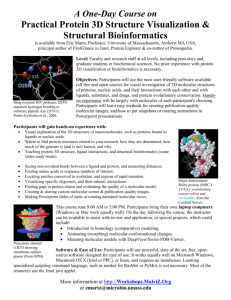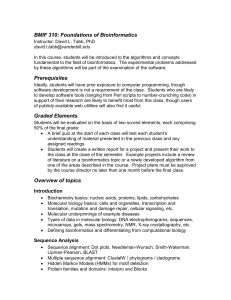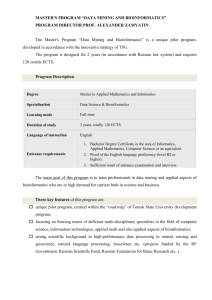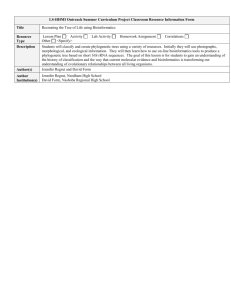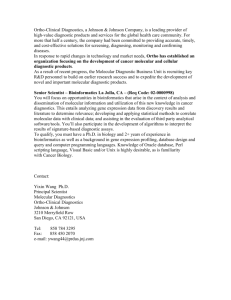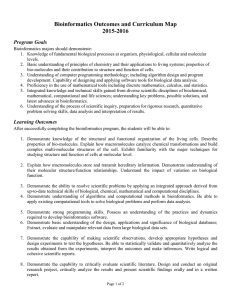コンピュータ科学演習集中講義 時間割
advertisement
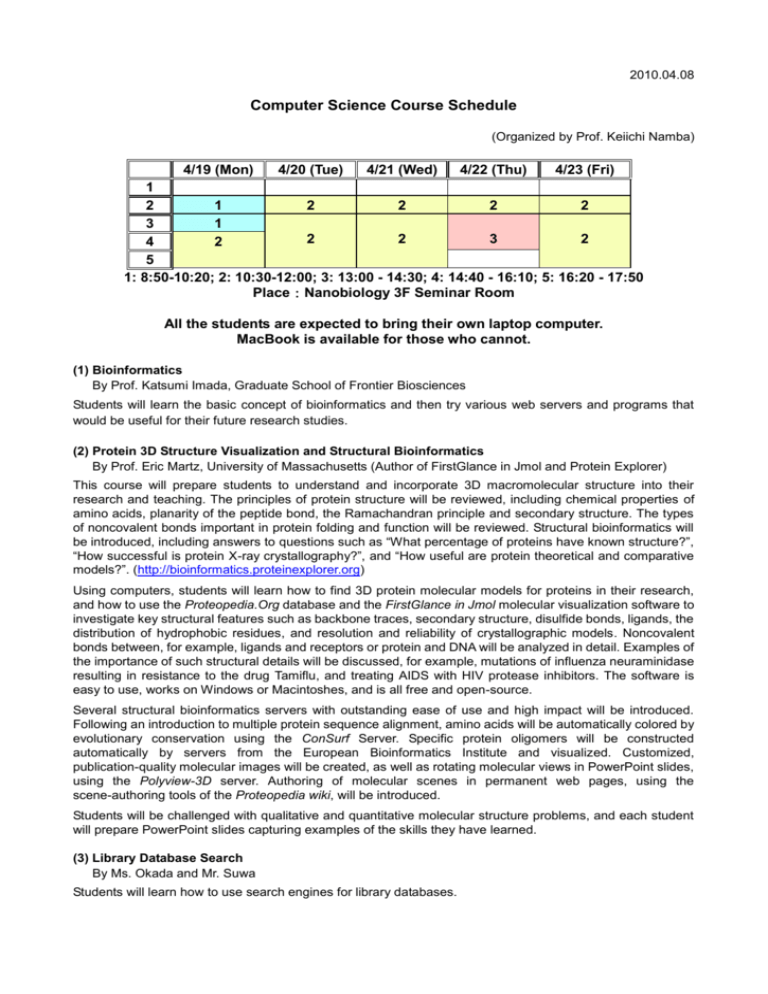
2010.04.08 Computer Science Course Schedule (Organized by Prof. Keiichi Namba) 4/19 (Mon) 4/20 (Tue) 4/21 (Wed) 4/22 (Thu) 4/23 (Fri) 1 2 1 2 2 2 2 3 1 2 2 3 2 4 2 5 1: 8:50-10:20; 2: 10:30-12:00; 3: 13:00 - 14:30; 4: 14:40 - 16:10; 5: 16:20 - 17:50 Place:Nanobiology 3F Seminar Room All the students are expected to bring their own laptop computer. MacBook is available for those who cannot. (1) Bioinformatics By Prof. Katsumi Imada, Graduate School of Frontier Biosciences Students will learn the basic concept of bioinformatics and then try various web servers and programs that would be useful for their future research studies. (2) Protein 3D Structure Visualization and Structural Bioinformatics By Prof. Eric Martz, University of Massachusetts (Author of FirstGlance in Jmol and Protein Explorer) This course will prepare students to understand and incorporate 3D macromolecular structure into their research and teaching. The principles of protein structure will be reviewed, including chemical properties of amino acids, planarity of the peptide bond, the Ramachandran principle and secondary structure. The types of noncovalent bonds important in protein folding and function will be reviewed. Structural bioinformatics will be introduced, including answers to questions such as “What percentage of proteins have known structure?”, “How successful is protein X-ray crystallography?”, and “How useful are protein theoretical and comparative models?”. (http://bioinformatics.proteinexplorer.org) Using computers, students will learn how to find 3D protein molecular models for proteins in their research, and how to use the Proteopedia.Org database and the FirstGlance in Jmol molecular visualization software to investigate key structural features such as backbone traces, secondary structure, disulfide bonds, ligands, the distribution of hydrophobic residues, and resolution and reliability of crystallographic models. Noncovalent bonds between, for example, ligands and receptors or protein and DNA will be analyzed in detail. Examples of the importance of such structural details will be discussed, for example, mutations of influenza neuraminidase resulting in resistance to the drug Tamiflu, and treating AIDS with HIV protease inhibitors. The software is easy to use, works on Windows or Macintoshes, and is all free and open-source. Several structural bioinformatics servers with outstanding ease of use and high impact will be introduced. Following an introduction to multiple protein sequence alignment, amino acids will be automatically colored by evolutionary conservation using the ConSurf Server. Specific protein oligomers will be constructed automatically by servers from the European Bioinformatics Institute and visualized. Customized, publication-quality molecular images will be created, as well as rotating molecular views in PowerPoint slides, using the Polyview-3D server. Authoring of molecular scenes in permanent web pages, using the scene-authoring tools of the Proteopedia wiki, will be introduced. Students will be challenged with qualitative and quantitative molecular structure problems, and each student will prepare PowerPoint slides capturing examples of the skills they have learned. (3) Library Database Search By Ms. Okada and Mr. Suwa Students will learn how to use search engines for library databases.
